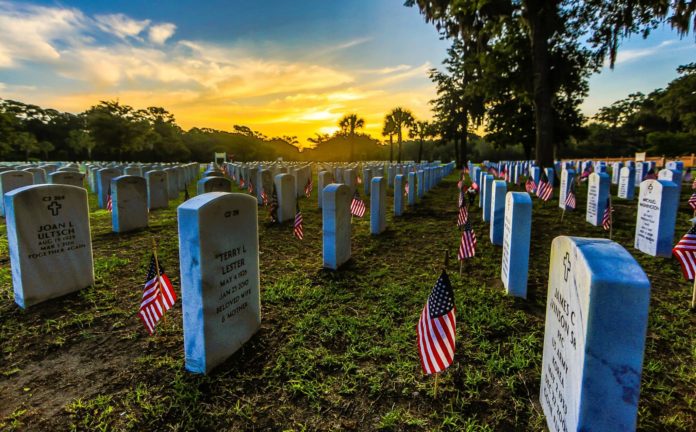As we relish the Memorial Day weekend in the Lowcountry, folks are enjoying cookouts, trips to the beach and taking the boat out for an extended spin on Beaufort’s local waterways and maybe even having a few beers and corn hole over at the sandbar.
Wait. That’s not really what Memorial Day is for…is it?
Lots of folks think Memorial Day is for celebrating and having fun. All too often around Memorial Day we tend to forget exactly why the holiday was created: to honor those American men and women who died during combat. Those that gave their lives for our freedoms. Our real heroes.
Given that it’s also the traditional beginning of the summer season, there seems to be some confusion over what the holiday honors.
To put it simply, Memorial Day is for the American troops who didn’t get to come back home and drink a beer at a homecoming party or retire from their branch of service quietly. They died in the field of combat and instead returned home under solemn circumstances, inside flag-draped coffins.
Memorial Day is reserved for those who can’t return a smile or a salute, not to mention the families and friends who have been left behind.
It’s because of these brave Americans throughout history that we are able to have that cookout, or that trip to the beach, or to take the boat out.
If they hadn’t fought and paid the ultimate sacrifice, then there might not be an America at all.
Decoration Day
Originally known as Decoration Day, it originated in the years following the Civil War. The war ended in the spring of 1865 and claimed more lives than any conflict in U.S. history and required the establishment of the country’s first national cemeteries; including the Beaufort National Cemetery on Boundary Street.
By the late 1860s, Americans in various towns and cities had begun holding springtime tributes to these countless fallen soldiers, decorating their graves with flowers and reciting prayers.
It is unclear where exactly this tradition originated; numerous different communities may have independently initiated the memorial gatherings. Nevertheless, in 1966 the federal government declared Waterloo, New York, the official birthplace of Memorial Day.
Waterloo, which first celebrated the day on May 5, 1866, was chosen because it hosted an annual, community-wide event, during which businesses closed and residents decorated the graves of soldiers with flowers and flags.
History of Memorial Day
On May 5, 1868, General John A. Logan, leader of an organization for Northern Civil War veterans, called for a nationwide day of remembrance later that month. “The 30th of May, 1868, is designated for the purpose of strewing with flowers, or otherwise decorating the graves of comrades who died in defense of their country during the late rebellion, and whose bodies now lie in almost every city, village and hamlet churchyard in the land,” he proclaimed.
The date of Decoration Day was chosen because it wasn’t the anniversary of any particular battle.
Memorial Day, as Decoration Day gradually came to be known, originally honored only those lost while fighting in the Civil War. But during World War I the United States found itself embroiled in another major conflict, and the holiday evolved to commemorate American military personnel who died in all wars.
For decades, Memorial Day continued to be observed on May 30, the date Logan had selected for the first Decoration Day. But in 1968 Congress passed the Uniform Monday Holiday Act, which established Memorial Day as the last Monday in May in order to create a three-day weekend for federal employees; the change went into effect in 1971. The same law also declared Memorial Day a federal holiday.
While you’re out enjoying the sun, fun and water that Beaufort has to offer, make sure you take a moment to remember why it’s Memorial Day in the first place.










